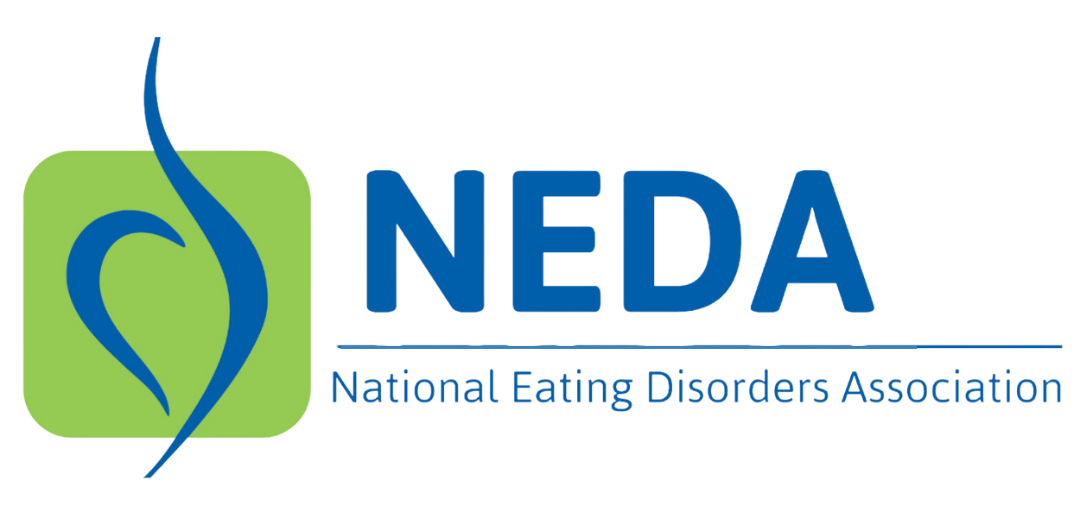By Jason Nagata M.D., M.Sc.
What is Muscle Dysmorphia?
Muscle dysmorphia is also known as “bigorexia” or “reverse anorexia.” Muscle dysmorphia is a specific type of body dysmorphic disorder in which a person becomes preoccupied with the idea that their body build is too small or not muscular enough.1 People with muscle dysmorphia may view themselves as too small even if others perceive them to be in good shape with well-developed muscles. An individual with muscle dysmorphia engages in repetitive behaviors such as mirror checking, excessive exercise (weightlifting), high protein consumption while limiting fat consumption, and muscle-building supplements and/or drugs such as anabolic steroids.2,3 Muscle dysmorphia can lead to clinically significant distress or impairment in social, occupational, school, or other areas of life functioning. An individual with muscle dysmorphia can also be preoccupied with other body parts. Muscle dysmorphia is more common in boys and men than in girls and women.4 Approximately 2.2% of adolescent boys and 1.4% of adolescent girls in Australia met the criteria for muscle dysmorphia.5 Prior studies estimated that the prevalence of muscle dysmorphia was 5.9% among college students6 and between 13.6% and 44% among male weightlifters.7
What are the Warning Signs of Muscle Dysmorphia?
Warning signs for muscle dysmorphia are when a person becomes preoccupied with their muscles, appearance, body size, weight, exercise, or food in a way that worsens their quality of life. They may withdraw from usual activities or friends because of concerns about body size and the appearance of their muscles.
People with muscle dysmorphia may use anabolic steroids or other appearance- and performance-enhancing drugs to become more muscular. Anabolic steroid use can affect the brain and lead to extreme irritability, aggression, paranoia, and poor mental health. In the long term, anabolic steroids can lead to kidney problems, liver damage, and heart disease.8 They may also engage in excessive or compulsive exercise, which can lead to muscle and joint injuries.3
Muscle dysmorphia is also linked to higher depression, anxiety, substance use, and suicide risk.3
What are Risk Factors for Muscle Dysmorphia?
- Muscle dysmorphia is more common among men than among women.4
- Bodybuilders and other people who lift weights are at a higher risk than the general population.9
- Competitive athletes face a higher risk compared to noncompetitive athletes.4
- Athletes who engage in weightlifting to alter their body’s appearance are at a greater risk than those who prioritize performance enhancement.4
- Gay, lesbian, and bisexual individuals may have a higher risk for muscle dysmorphia symptoms than heterosexual individuals.10
- Transgender men have a higher risk than transgender women.11
- Experiencing violent victimization is a risk factor for muscle dysmorphia.12
- More social media use and screen time are associated with muscle dysmorphia symptoms.13 Social media use in men is associated with muscle dissatisfaction and thoughts of anabolic steroid use.14
What are the Differences and Similarities Between Muscle Dysmorphia and Eating Disorders?
While individuals with eating disorders often experience body image issues related to weight and shape, those with muscle dysmorphia have concerns regarding their muscularity. Although they are separate disorders with distinct diagnostic criteria, eating disorders and muscle dysmorphia share common symptoms and can occur together.15,16
- Individuals with muscle dysmorphia may engage in disordered eating to become muscular. This may involve consuming large amounts of protein while cutting carbohydrates and fats, engaging in bulking/cutting cycles, and having cheat meals.17 Therefore, for some people, muscle dysmorphia has elements of both body dysmorphic disorder and eating disorders.15
- Individuals with eating disorders may engage in excessive or compulsive exercise.18
- Both disorders typically onset during adolescence and young adulthood.16
- Both conditions pose a higher risk of co-occurring disorders, including depression, anxiety, substance use disorder, and suicide.3,15
How is Muscle Dysmorphia Treated?
People with muscle dysmorphia should seek professional help given the serious physical and mental health consequences of the disorder. Muscle dysmorphia can be supported by an interdisciplinary team including a mental health, medical, and nutrition provider. Mental health support can include cognitive behavioral therapy,19 which is commonly used for the treatment of body dysmorphic disorder.20 Medications such as selective serotonin reuptake inhibitors (SSRIs) have also been used for the treatment of muscle dysmorphia19 and body dysmorphic disorder;21 however, further research is still needed to determine the most effective treatments for muscle dysmorphia.
Learn more about treatment here.
Learn more about finding treatment providers in your area here.
Sources
[1] American Psychiatric Association. (2013). Diagnostic and statistical manual of mental disorders (5th ed.). https://doi.org/10.1176/appi.books.9780890425596
[2] Cunningham, M. L., Griffiths, S., Mitchison, D., Mond, J. M., Castle, D., & Murray, S. B. (2017). Muscle Dysmorphia: An Overview of Clinical Features and Treatment Options. Journal of cognitive psychotherapy, 31(4), 255–271. https://doi.org/10.1891/0889-8391.31.4.255
[3] Pope, C. G., Pope, H. G., Menard, W., Fay, C., Olivardia, R., & Phillips, K. A. (2005). Clinical features of muscle dysmorphia among males with body dysmorphic disorder. Body image, 2(4), 395–400. https://doi.org/10.1016/j.bodyim.2005.09.001.
[4] Skemp, K. M., Mikat, R. P., Schenck, K. P., & Kramer, N. A. (2013). Muscle dysmorphia: risk may be influenced by goals of the weightlifter. Journal of strength and conditioning research, 27(9), 2427–2432. https://doi.org/10.1519/JSC.0b013e3182825474
[5] Mitchison, D., Mond, J., Griffiths, S., Hay, P., Nagata, J. M., Bussey, K., Trompeter, N., Lonergan, A., & Murray, S. B. (2022). Prevalence of muscle dysmorphia in adolescents: findings from the EveryBODY study. Psychological medicine, 52(14), 3142–3149. https://doi.org/10.1017/S0033291720005206
[6] Bo, S., Zoccali, R., Ponzo, V., Soldati, L., De Carli, L., Benso, A., Fea, E., Rainoldi, A., Durazzo, M., Fassino, S., & Abbate-Daga, G. (2014). University courses, eating problems and muscle dysmorphia: are there any associations?. Journal of translational medicine, 12, 221. https://doi.org/10.1186/s12967-014-0221-2.
[7] Santos Filho, C. A., Tirico, P. P., Stefano, S. C., Touyz, S. W., & Claudino, A. M. (2016). Systematic review of the diagnostic category muscle dysmorphia. The Australian and New Zealand journal of psychiatry, 50(4), 322–333. https://doi.org/10.1177/0004867415614106.
[8] Pope, H. G., Jr, Wood, R. I., Rogol, A., Nyberg, F., Bowers, L., & Bhasin, S. (2014). Adverse health consequences of performance-enhancing drugs: an Endocrine Society scientific statement. Endocrine reviews, 35(3), 341–375. https://doi.org/10.1210/er.2013-1058
[9] Cerea, S., Bottesi, G., Pacelli, Q. F., Paoli, A., & Ghisi, M. (2018). Muscle Dysmorphia and its Associated Psychological Features in Three Groups of Recreational Athletes. Scientific reports, 8(1), 8877. https://doi.org/10.1038/s41598-018-27176-9.
[10] Ganson, K. T., Hallward, L., Cunningham, M. L., Rodgers, R. F., Murray, S. B., & Nagata, J. M. (2023). Muscle dysmorphia symptomatology among a national sample of Canadian adolescents and young adults. Body image, 44, 178–186. https://doi.org/10.1016/j.bodyim.2023.01.00.
[11] Nagata, J. M., Compte, E. J., McGuire, F. H., Lavender, J. M., Brown, T. A., Murray, S. B., Flentje, A., Capriotti, M. R., Lubensky, M. E., Obedin-Maliver, J., & Lunn, M. R. (2021). Community norms of the Muscle Dysmorphic Disorder Inventory (MDDI) among gender minority populations. Journal of eating disorders, 9(1), 87. https://doi.org/10.1186/s40337-021-00442-4.
[12] Ganson, K. T., Hallward, L., Rodgers, R. F., Testa, A., Jackson, D. B., & Nagata, J. M. (2023). Associations between violent victimization and symptoms of muscle dysmorphia: Findings from the Canadian Study of Adolescent Health Behaviors. Body image, 46, 294–299. https://doi.org/10.1016/j.bodyim.2023.06.014 .
[13] Ganson, K. T., Hallward, L., Rodgers, R. F., Testa, A., Jackson, D. B., & Nagata, J. M. (2023). Contemporary screen use and symptoms of muscle dysmorphia among a national sample of Canadian adolescents and young adults. Eating and weight disorders : EWD, 28(1), 10. https://doi.org/10.1007/s40519-023-01550-7.
[14] Griffiths, S., Murray, S. B., Krug, I., & McLean, S. A. (2018). The Contribution of Social Media to Body Dissatisfaction, Eating Disorder Symptoms, and Anabolic Steroid Use Among Sexual Minority Men. Cyberpsychology, behavior and social networking, 21(3), 149–156. https://doi.org/10.1089/cyber.2017.0375 .
[15] Vasiliu O. (2023). At the Crossroads between Eating Disorders and Body Dysmorphic Disorders-The Case of Bigorexia Nervosa. Brain sciences, 13(9), 1234. https://doi.org/10.3390/brainsci13091234.
[16] Murray, S. B., Rieger, E., Touyz, S. W., & De la Garza García Lic, Y. (2010). Muscle dysmorphia and the DSM-V conundrum: where does it belong? A review paper. The International journal of eating disorders, 43(6), 483–491. https://doi.org/10.1002/eat.20828.
[17] Ganson, K. T., Cunningham, M. L., Pila, E., Rodgers, R. F., Murray, S. B., & Nagata, J. M. (2022). “Bulking and cutting” among a national sample of Canadian adolescents and young adults. Eating and weight disorders : EWD, 27(8), 3759–3765. https://doi.org/10.1007/s40519-022-01470-y.
[18] Nagata, J. M., Carlson, J. L., Kao, J. M., Golden, N. H., Murray, S. B., & Peebles, R. (2017). Characterization and correlates of exercise among adolescents with anorexia nervosa and bulimia nervosa. The International journal of eating disorders, 50(12), 1394–1403. https://doi.org/10.1002/eat.22796.
[19] Leone, J. E., Sedory, E. J., & Gray, K. A. (2005). Recognition and treatment of muscle dysmorphia and related body image disorders. Journal of athletic training, 40(4), 352–359.
[20] Castle, D., Beilharz, F., Phillips, K. A., Brakoulias, V., Drummond, L. M., Hollander, E., Ioannidis, K., Pallanti, S., Chamberlain, S. R., Rossell, S. L., Veale, D., Wilhelm, S., Van Ameringen, M., Dell’Osso, B., Menchon, J. M., & Fineberg, N. A. (2021). Body dysmorphic disorder: a treatment synthesis and consensus on behalf of the International College of Obsessive-Compulsive Spectrum Disorders and the Obsessive Compulsive and Related Disorders Network of the European College of Neuropsychopharmacology. International clinical psychopharmacology, 36(2), 61–75. https://doi.org/10.1097/YIC.0000000000000342.
[21] Hong, K., Nezgovorova, V., Uzunova, G., Schlussel, D., & Hollander, E. (2019). Pharmacological Treatment of Body Dysmorphic Disorder. Current neuropharmacology, 17(8), 697–702. https://doi.org/10.2174/1570159X16666180426153940.

